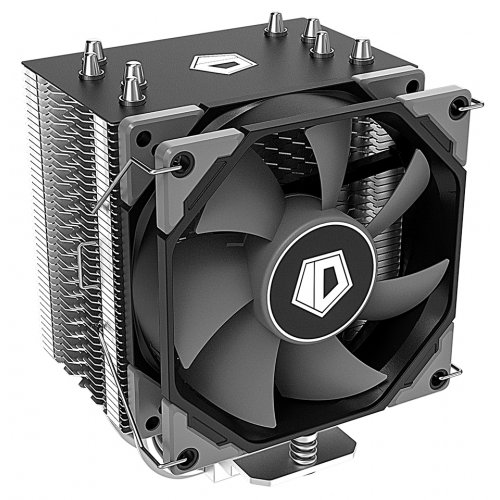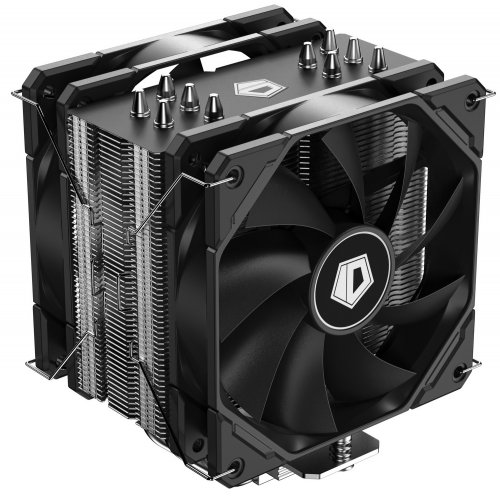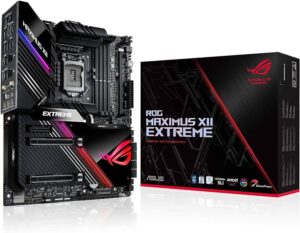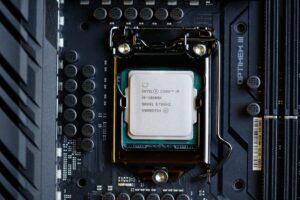To determine if a CPU cooler is functioning properly, check the temperatures in your computer’s BIOS or use a hardware monitoring tool. Additionally, ensure that the cooler’s fan is spinning and that there is no unusual noise.
Selecting the right CPU cooler and confirming its operation is crucial for maintaining optimal computer performance and longevity. A well-functioning cooler keeps the central processing unit (CPU) at safe operating temperatures, thereby preventing overheating that can lead to hardware failures and reduced efficiency.
Issues such as system crashes and performance throttling often indicate a potential problem with the cooling system. Users can monitor the health of their CPU cooler by paying attention to system temperatures, fan operation, and listening for abnormal sounds that could signal a malfunction. Regular checks help maintain peak performance of the CPU and extend its service life.

Credit: pcde.nerdpart.com
Recognizing The Symptoms Of An Ineffective Cpu Cooler
Correctly diagnosing an ineffective CPU cooler is key to maintaining a healthy computer. Recognize when a cooler is failing to prevent damage and keep performance high.
Unusual Cpu Temperatures
Monitoring CPU temperatures provides immediate clues about cooler performance. Ideal CPU temperatures vary depending on the model and workload but should generally remain within a safe range.
- High idle temperatures: If the CPU is hot without heavy tasks, the cooler might not work properly.
- Sudden spikes: Temperatures that jump quickly could suggest cooler inefficiency.
Slowdowns And Performance Drops
When performance takes a hit, it could be thermal throttling. Computers slow down to reduce heat output when coolers cannot keep up.
- Check for slower software or program launches.
- Notice longer rendering or processing times.
- Experience frequent stutters or freezes during tasks.
Visual Inspection Of The Cpu Cooler
Visual Inspection of the CPU Cooler is a straightforward approach to determine if your CPU cooling system functions properly. A simple look at your cooler can reveal a lot about its condition and performance. Below are key aspects to check during a visual inspection.
Indicator Lights And Fan Motion
Start by checking for indicator lights on the CPU cooler. These lights often signal whether the unit receives power and operates as intended. Next, observe the fan in the cooler. A spinning fan is a good sign. It means the cooler is actively working to dissipate heat. Look for:
- Steady or blinking lights.
- Consistent fan motion.
Physical Condition And Dust Accumulation
Examine the physical condition of the CPU cooler. Search for any signs of damage, such as cracks or broken parts. Dust accumulation can also reduce efficiency and might indicate a need for maintenance. Use a flashlight to get a better view. Check for:
- Intact heatsink fins.
- Minimal dust on surfaces.
Utilizing Software For Monitoring Cpu Health
Keeping an eye on the CPU cooler’s performance safeguards a computer’s brain. Software helps in this task. It checks if the cooler does its job well. Recognizing the signs of a healthy CPU keeps a computer in top shape.
Temperature Tracking Applications
Tools that monitor temperature tell if a CPU cooler works right. They show real-time data. These tools often come free and are easy to install.
- Core Temp: This app shows the CPU temperature of each core.
- HWMonitor: It provides detailed info including power consumption and fan speed.
- Speccy: Gives a quick summary of temperatures alongside other system info.
Such software alerts users when temperatures go high. Keep the CPU temperature under control. Then, the system performs well without any hitches.
Analyzing Readings From Bios/uefi
The Basic Input/Output System (BIOS) or Unified Extensible Firmware Interface (UEFI) offers another way to check CPU cooler performance. Upon system start-up, by pressing a specific key like Del or F2, users can enter the BIOS/UEFI menu.
| Step | Action |
|---|---|
| 1. | Restart computer and open BIOS/UEFI. |
| 2. | Look for a section named ‘PC Health Status’ or ‘Monitor’. |
| 3. | Check the CPU temperature readings. |
| 4. | Notice the fan speed to ensure the cooler is active. |
BIOS/UEFI readings are reliable since they don’t rely on third-party software. They show the status of your CPU cooler right from the start of your computer.

Credit: www.amazon.com
Testing Cpu Cooler Effectiveness
Ensuring a CPU cooler is doing its job is critical for the health of your PC. A cooler that’s not working can lead to overheating and potential damage to your hardware.
Here are straightforward ways to check if your CPU cooler is effective:
Stress Tests To Evaluate Performance
Employ stress testing software to put your CPU under heavy load. This simulates intense activity and makes your CPU produce heat.
- Monitor temperature readings during stress tests.
- If temperatures stay within safe limits, your cooler works well.
Common tools include Prime95 and AIDA64. These programs help highlight any cooling issues. Maintain safe system use. Overdoing stress tests can harm your CPU.
Benchmarking Before And After Cleaning Or Replacement
Benchmark your CPU before and after cleaning or replacing its cooler. This can reveal the cooler’s impact on CPU performance and temperature.
- Record idle and load temperatures before cleaning.
- Clean or change your cooler.
- Repeat the temperature recording process.
Analyze the data for temperature changes. Lower temperatures post-cleaning indicate an improvement in cooler effectiveness.
Use benchmarking tools like HWMonitor or Core Temp. These provide detailed insights into your CPU’s thermal performance.
Proactive Maintenance Of Cpu Coolers
A well-maintained CPU cooler prevents performance drops. It stops overheating. Keep your cooler in top shape. Follow these tips.
Regular Cleaning Schedule
Dust and debris limit a cooler’s effectiveness. They cause overheating. Set a routine for cleaning. Stick to it.
- Power off and unplug your computer.
- Open the case to access the cooler.
- Use compressed air to blow away dust.
- Wipe surfaces with a soft, dry cloth.
- Clean the fan blades gently.
- Check every month for the best results.
Updating The Cooling System
Technology improves over time. A newer cooling system boosts performance. It keeps your CPU cooler for longer. Consider an update.
- Assess your cooling needs. Do you game? Run heavy software?
- Research recent coolers. What fits your CPU?
- Read user and expert reviews. Are they positive?
- Look for compatibility with your system.
- Install the new cooler or get professional help.
- Test the system to confirm it’s working.
Keep an eye on temperatures. Use software tools for monitoring. Low temps mean success. Enjoy a quieter and faster computer.

Credit: nerdpart.com
Frequently Asked Questions Of How To Tell If Cpu Cooler Is Working
How To Check If Your Cpu Cooler Is Functioning?
Check the cooler fan for rotation to ensure it’s working. Touch the heatsink; it should feel warm, not hot. Listen for unusual noises that may indicate a faulty cooler. CPU temperature monitoring software can also provide a real-time status.
What Are Signs Of A Failing Cpu Cooler?
A failing CPU cooler often leads to high CPU temperatures, system instability, and unexpected shutdowns. Listen for grinding or rattling noises from the cooler fan, as these could suggest a mechanical failure.
Can Software Monitor Cpu Cooler Performance?
Yes, various software tools can monitor CPU cooler performance by displaying the CPU temperature in real-time. Programs like HWMonitor, SpeedFan, or your motherboard’s proprietary software can be used for this purpose.
How Often Should A Cpu Cooler Be Replaced?
CPU coolers generally have a long lifespan but consider replacing them when they become noisy, less efficient, or when you upgrade your CPU. Regular maintenance, like cleaning dust buildup, can extend their service life.
Conclusion
Ensuring your CPU cooler is functioning correctly is crucial for system health. Regular checks and monitoring are key. Look out for temperature fluctuations and listen for unusual fan sounds. Remember, a well-maintained cooler means a longer-lasting CPU. Stay vigilant and your computer will thank you.



